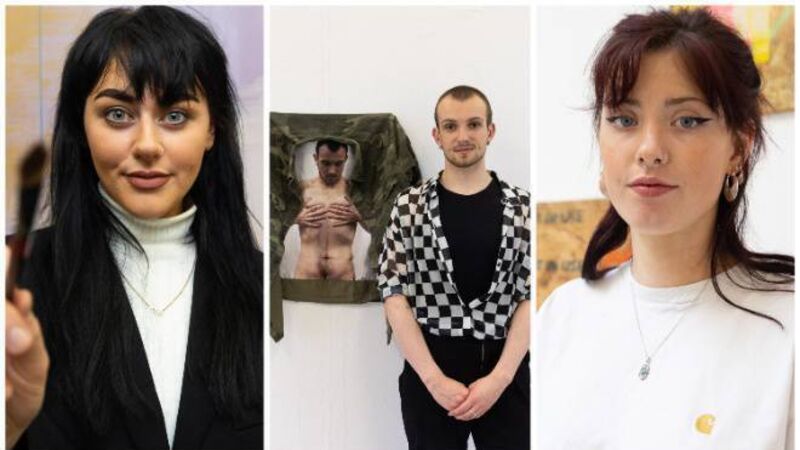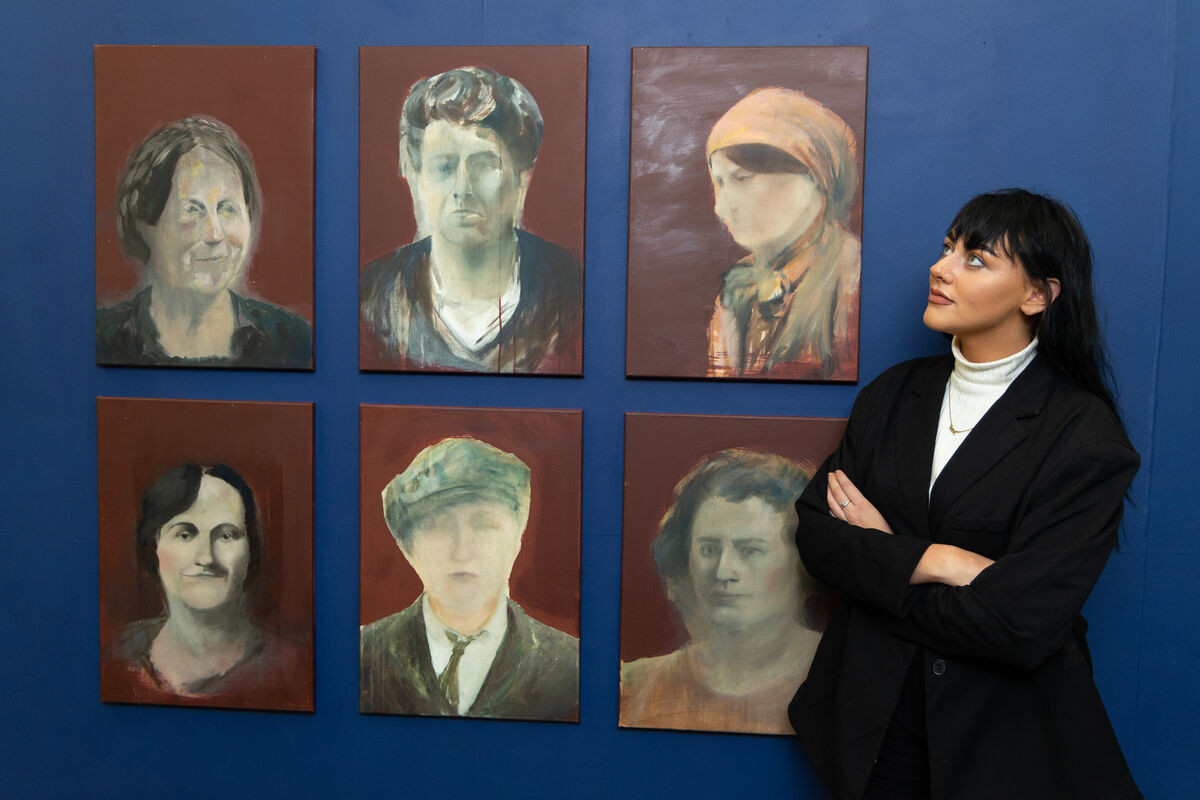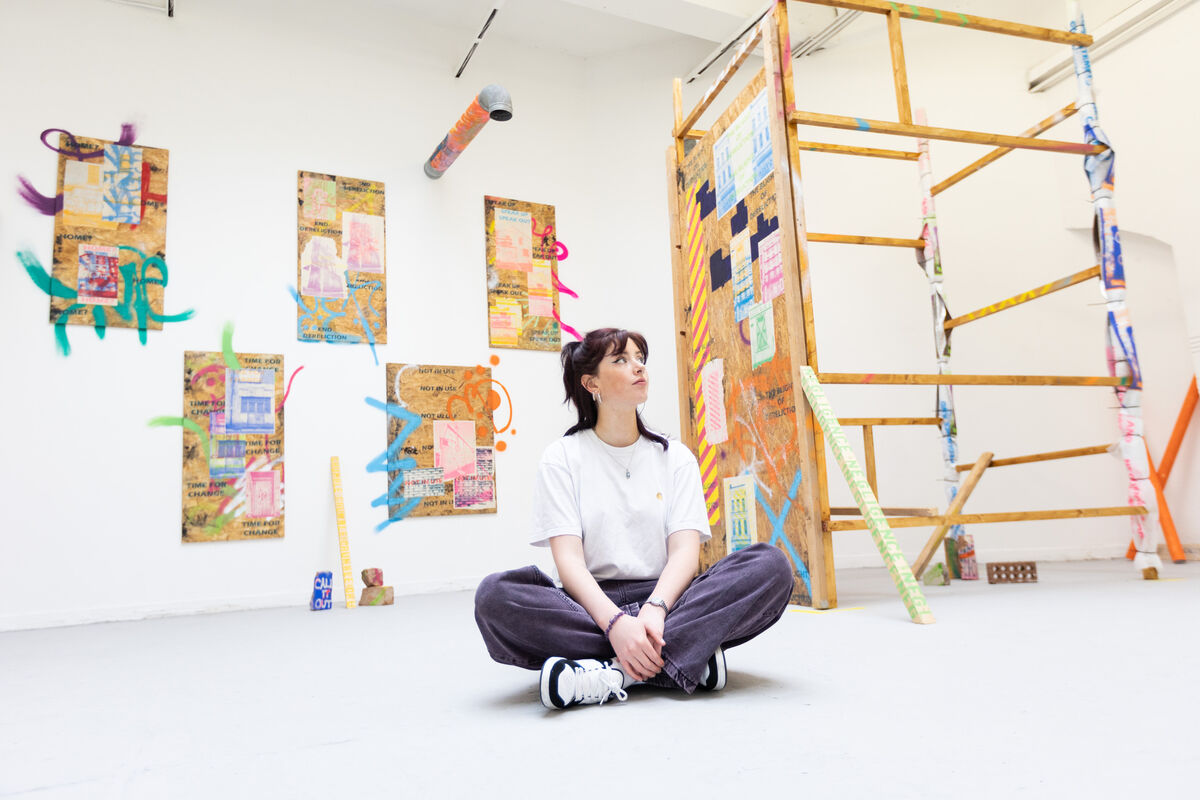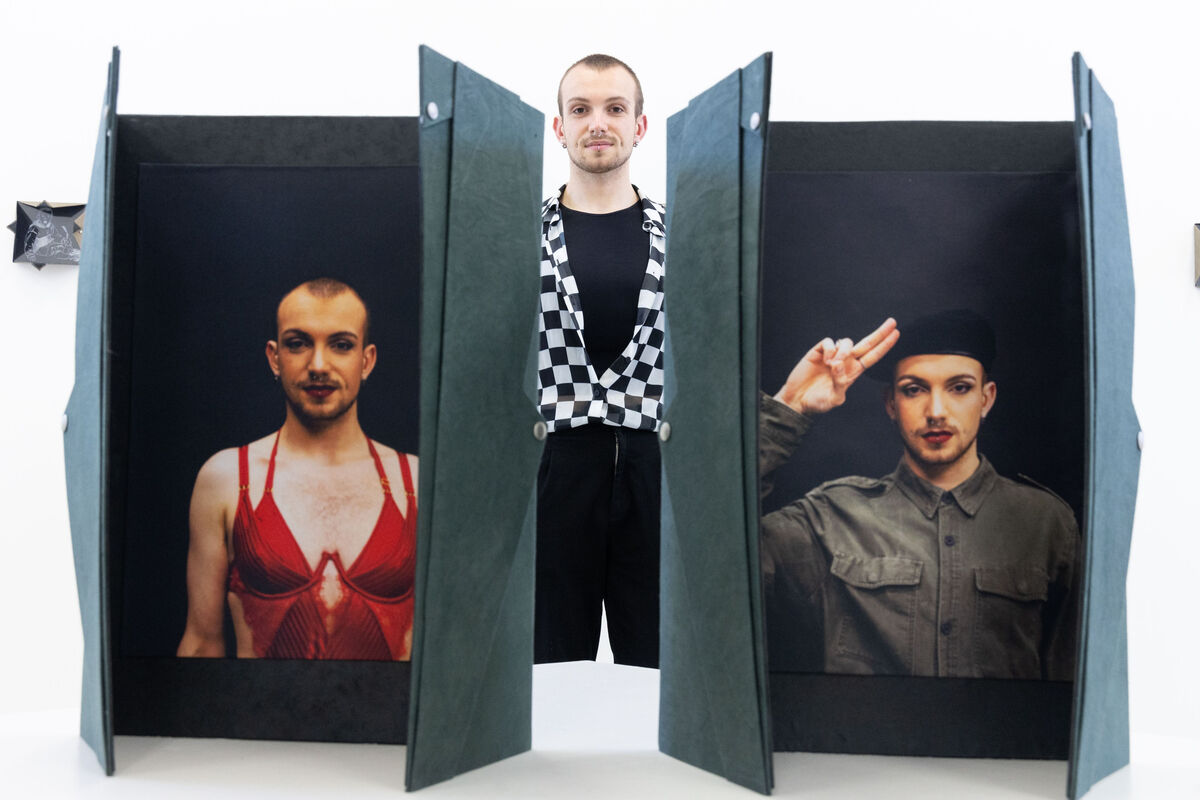Crawford art graduates in profile: Revolutionary women, queer identity, urban dereliction

Jenny Fitzgerald, Oskar Swewczuk and Melanie McGrath - three of the young artists displaying at this year's Crawford graduate show

The faces of the women of Ireland’s revolutionary period are burned into Jenny Fitzgerald’s brain.
Women like Countess Markievicz, Ada English and the Cork-based Wallace sisters, who fought and supported the Irish Free State movement and whose stories Jenny researched for her final year artwork, ‘Cumann na mBan’, part of the Crawford Graduate Exhibitions.
“I did a massive amount of research. I felt I knew these women. It was like a detective room in my studio – their images were everywhere,” says the 23-year-old, an alumna of Presentation Secondary School, Ballyphehane.
Driving her work was a desire to restore to these women “what should have been rightfully theirs” – historical recognition of their contribution to the Irish rebellion.
Fitzgerald has absorbed the spirit of strong women. “My mother’s from Tipperary. Her mother, Brigid, was a strong countrywoman who raised 12 children. She was a bit intimidating but she had character. At 80, she was bringing cattle to the co-op. She was 96 when she died.
“There was strength in the Irish women of that generation and it carried through. My mother has it. This strong feminine Irish identity needs to be highlighted – else it goes unrecognised, unnoticed.”
Portraits of six of the revolutionary women comprise part of Fitzgerald’s artwork. “In depicting them, I faded them out a small bit. I didn’t want to create a shrine. They probably wouldn’t have wanted that. The portraits are a subtle nod to their identities, rather than creating this icon. They highlight their identity, but also show how they’ve been hidden from the limelight of history.”
For another work, she used the composition of Sean Keating’s iconic ‘Men of the South’, while also using her own artistic licence. “I named it ‘Women of the Revolution’.”
Fitzgerald believes writing women out of history has a negative legacy. “It doesn’t give the next generation of women hope that they have this ability, this strength. It reiterates the typical vulnerability of the female role. When girls read history books all about men, they think ‘maybe I am secondary, maybe I can’t do as well, be as great.”
She wants to continue collecting primary stories for an eventual Masters in Fine Art Practice. “There’s so much uncovered history in Ireland. My great-grandfather was involved in the Crossbarry Ambush. He was running from the British and robbed my great-grandfather’s ticket to America.
“Everybody I talk to about this period has a story.”

Passing through Cork city every day, Melanie McGrath started noticing just how many buildings have been left vacant and derelict.
“It was really shocking when I stopped and took it in. And I saw how people have become complacent to how these buildings have just been left.”
A strong urge to highlight the issue inspired her final year project, ‘The Blight of Dereliction’. “This is me trying to take some sort of initiative to call it out,” says the 22-year-old from Glanmire.
At derelict properties on Fr Matthew Quay, North Main Street, Albert Road, Evergreen Street, Barrack Street, she collected graffiti, marks, text – either sprayed on a wall or words gathered from found content. “I was mostly drawn to the political graffiti, tags: ‘Not in Use’, ‘Time for Change’, ‘Speak up, Speak out’. Another that struck me was ‘Home?’”
McGrath gathered imagery from each site and translated the photographs into screen-prints. Inspired by building paraphernalia she saw at the sites – chipboard boarding up windows, bags of cement that were to be used in construction but got abandoned – she used building materials to create an immersive installation and to capture the energy of the urban landscape.
“I work with large scale and three-dimensional pieces to represent the scale and abruptness of urban life,” she says, describing herself as big into the urban environment.
“I’m big into street culture. I do a lot of skate-boarding and that feeds into my art.” She started skate-boarding during the pandemic. “It was a boredom thing, but I stuck at it and I love it. I like the adrenalin of learning a new trick and having everyone’s support with it.
“It also has to do with the urban landscape – skaters find their own way to skate, even if there isn’t a park. They use different structures – they skate off kerbs, concrete bricks.”
McGrath reads the urban environment, finding it eloquent in what it has to say. And this she has expressed in ‘The Blight of Dereliction’. “The messages are right in front of us. We have to take notice of what these buildings are doing in the city. There’s such an amount of homelessness in the city – yet plenty of buildings that could be used as accommodation.”

A childhood experience of a military-type summer camp in Poland inspired the main element of Oskar Szewczuk’s artwork, which explores queer identity and which is on display at the Crawford Graduate Exhibitions.
Szewczuk did the week-long camp for a few years from when he was eight – he has lived in Ireland since he was 13. “I hated the camp so much. I was forced into it. It wasn’t me in any way or form. I remember it as quite violent, loud, obnoxious, which scared me. There were guns, old World War I military cars. It was supposed to be this really great summer camp – I didn’t enjoy it.”
Szewczuk titled the quilt at the centre of his exhibition ‘Transformation’. “It’s a big quilt, the size of a single bed. I used a lot of army patterns and colours, representing masculinity and the whole aspect of the army.”
Szewczuk’s quilt has – on its right hand side – a stitched design of a full-bodied figure, which represents him today, aged 22. “On the left, there’s a stitched figure of me as a four-year-old. In that figure I’m looking down – I have my mom’s high-heeled boots on. It represents my baby self – this happy little queer kid. And my big self is saluting my little self with an army salute.”
The work represents the battles Szewczuk has fought with his own body. “I struggled with my body through the years. My weight fluctuated a lot when I was young, so my body isn’t like every other boy’s body – my chest area is quite large. I was bullied in school because of how my body looked.”
His work has always centred around themes of body and the human form. “The use of my body in my work is all about vulnerability. I wanted to explore it, show it’s ok, that everybody is beautiful and there is no shame anymore.”
Szewczuk says he has always been drawn to textures, the qualities of fabrics. For his final year project, he did a quilt to show he was – after four years – able to do one on his own. “Quilts are technical and difficult to make. They’re time-consuming and have to be very precise. So a quilt represents patience.” And in the context of exploring vulnerability, he says a quilt also offers comfort and warmth.
His future plans? “I would definitely rather live in Ireland. I know Poland [can be] a very homophobic country. And I would love to work for a book bindery.”
- MTU Crawford College of Art & Design: Fine Art & Applied Art Exhibition runs until Thursday, June 8. The exhibition is open from 11am-6pm on Tuesday and Wednesday and 11am-8.30pm on Thursday, at MTU’s Sharman Crawford Street Campus



